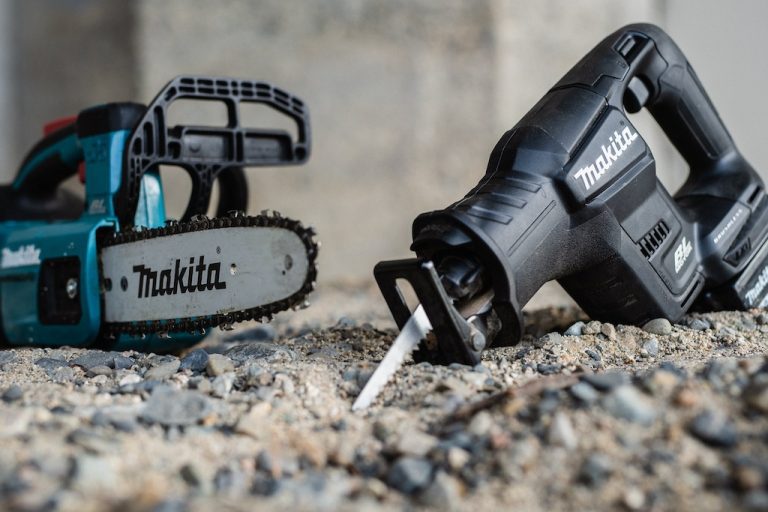How to Tune a Chainsaw Carburettor: Essential Tips for Precision
To tune a chainsaw carburetor, first, locate the high and low-speed adjustment screws. With the engine warmed up, adjust the screws to achieve the proper idle and high-speed settings to ensure the chainsaw runs smoothly and efficiently.
Tuning the carburetor of a chainsaw is essential to maintain its optimal performance. A properly adjusted carburetor ensures the engine runs smoothly, consumes fuel efficiently, and prevents the chain from overheating, extending the chainsaw’s lifespan. Learning to tune a chainsaw carburetor can be a valuable skill for any chainsaw operator, allowing them to maintain their equipment and prolong its usability.
In this guide, we will provide a step-by-step approach to help you tune a chainsaw carburetor effectively, ensuring your chainsaw operates at its best.
Understanding Chainsaw Carburettor Tuning
The Role Of Carburettor In Chainsaw Performance
The carburettor plays a crucial role in the overall performance of a chainsaw. It is responsible for mixing the right amount of air and fuel to ensure efficient combustion. When the carburettor is properly tuned, it can enhance the power, torque, and acceleration of the chainsaw, leading to optimal cutting performance.
Symptoms Of A Poorly Tuned Carburettor
It’s essential to recognize the signs of a poorly tuned carburettor to maintain the efficiency of your chainsaw. Some common symptoms include:
- Difficulty in starting the chainsaw
- Irregular idle speed
- Lack of power during cutting
- High fuel consumption
- Excessive smoke from the exhaust
If you notice any of these issues, it’s crucial to address the carburettor tuning to ensure optimal performance of your chainsaw.
Preparing For Carburettor Tuning
Tuning a chainsaw carburettor is essential for maintaining optimal performance. Before diving into the actual tuning process, it’s crucial to properly prepare for the task. This includes gathering necessary tools and safety equipment, as well as conducting pre-checks and troubleshooting to identify any existing issues. By following these steps, you can ensure a smooth and successful carburettor tuning process, ultimately enhancing the efficiency and longevity of your chainsaw.
Gathering Necessary Tools And Safety Equipment
- Socket wrench set: To disassemble and access the carburettor.
- Flat-head screwdriver: For adjusting the carburettor’s idle speed and fuel mixture.
- Safety goggles: Protecting your eyes from potential debris and splinters.
- Protective gloves: Ensuring a secure grip and shielding your hands from sharp components.
Pre-checks And Troubleshooting Before Tuning
- Inspect the air filter: A clogged air filter can affect the carburettor’s performance. Clean or replace the filter as needed.
- Check the fuel system: Ensure the fuel lines and tank are free from blockages and that the fuel mixture is properly adjusted.
- Examine the spark plug: A fouled or damaged spark plug can impact the engine’s combustion. Replace the spark plug if necessary.
- Inspect the carburettor for leaks: Look for any signs of fuel or air leaks around the carburettor, and address any issues accordingly.
Step-by-step Carburettor Tuning Process
When working with a chainsaw, it’s essential to ensure that the carburettor is properly tuned for optimal performance. A well-tuned carburettor not only improves the chainsaw’s efficiency but also extends its lifespan. To achieve this, a step-by-step carburettor tuning process is required. This process involves adjusting the idle speed for optimal performance, fine-tuning the fuel and air mixture, and testing the chainsaw’s performance after adjustments. Each step plays a crucial role in enhancing the overall operation of the chainsaw.
Adjusting The Idle Speed For Optimal Performance
One of the first steps in tuning a chainsaw carburettor is to adjust the idle speed. This ensures that the chainsaw runs smoothly during idle and doesn’t stall unexpectedly. To adjust the idle speed:
- Locate the idle speed adjustment screw on the carburettor.
- Turn the screw clockwise to increase the idle speed and counterclockwise to decrease it.
- Adjust the screw until the chainsaw idles smoothly without the chain spinning.
Fine-tuning The Fuel And Air Mixture
Once the idle speed is set, the next step is to fine-tune the fuel and air mixture for optimal performance. This ensures that the chainsaw operates efficiently in different conditions. To fine-tune the fuel and air mixture:
- Locate the high and low-speed adjustment screws on the carburettor.
- Start the chainsaw and let it warm up.
- Using a tachometer, adjust the high-speed screw to achieve the recommended RPM specified by the manufacturer.
- Adjust the low-speed screw to optimize acceleration and throttle response.
Testing The Chainsaw’s Performance After Adjustments
After making the necessary adjustments to the carburettor, it’s important to test the chainsaw’s performance to ensure that it is running as expected. This involves:
- Starting the chainsaw and observing its idle and acceleration.
- Engaging the chain to confirm smooth operation under load.
- Checking for any irregular sounds or excessive vibration during operation.
By following this step-by-step carburettor tuning process, you can fine-tune your chainsaw for optimal performance and reliability.

Advanced Tips For Precision Tuning
Understanding The Impact Of Altitude And Weather On Carburettor Tuning
Altitude and weather conditions play a significant role in carburettor tuning for your chainsaw. Higher altitudes, for instance, can result in a leaner air-fuel mixture, leading to decreased engine performance. Colder temperatures also increase fuel density, necessitating adjustments to the air-fuel ratio. To effectively tune the carburettor, it is crucial to consider these factors and make the necessary adjustments to achieve optimal performance.
Achieving Optimal Performance For Different Chainsaw Models
When it comes to achieving precise carburettor tuning, it’s essential to recognize that different chainsaw models may require specific adjustments. Each chainsaw model comes with its own unique engine specifications, including varying fuel mixture requirements. By identifying these differences and making model-specific adjustments, you can ensure that each chainsaw is operating at its peak performance level, minimizing fuel consumption and maximizing cutting efficiency.
Maintaining Carburettor Performance
When it comes to keeping your chainsaw in top-notch condition, maintaining the performance of the carburettor is essential. By implementing regular maintenance practices, you can sustain tuning accuracy, troubleshoot common issues, and ensure your chainsaw operates at its best.
Implementing Regular Maintenance Practices To Sustain Tuning Accuracy
To maintain the performance of your chainsaw carburettor, it’s crucial to implement consistent maintenance practices. Here are some key steps you can take:
- Regularly clean the air filter to ensure proper air intake, which is vital for carburettor performance.
- Inspect and clean the spark plug, as a fouled plug can lead to erratic carburettor performance.
- Check for any fuel system leaks or blockages that can affect fuel delivery to the carburettor.
- Periodically adjust the idle and high-speed screws to maintain optimal operating settings.
- Use high-quality fuel and oil mixtures to prevent accumulation of deposits in the carburettor.
Troubleshooting And Addressing Common Issues Related To Carburettor Tuning
If you encounter issues with carburettor tuning, it’s important to know how to troubleshoot and address them effectively. Here are some common problems and their solutions:
| Common Issue | Solution |
|---|---|
| Hard starting or rough idling | Adjust the idle speed screw and clean the carburettor to remove any blockages. |
| Excessive fuel consumption | Check for leaks in the fuel system and ensure the carburettor is properly adjusted for fuel mixture. |
| Lack of power or stalling | Inspect the air filter, spark plug, and fuel lines for any issues affecting engine performance. |
Frequently Asked Questions For How To Tune A Chainsaw Carburettor
How Often Should I Tune My Chainsaw Carburetor?
You should tune your chainsaw carburetor at least once a year or if you notice any changes in its performance. Regular tuning will ensure optimal functioning and extend the lifespan of your chainsaw.
What Are The Signs That Indicate A Need For Carburetor Tuning?
If your chainsaw is hard to start, stalls frequently, or runs unevenly, it’s a clear sign that the carburetor needs tuning. Additionally, if you notice excessive fuel consumption or black smoke from the exhaust, it’s time for a tune-up.
Can I Tune My Chainsaw Carburetor On My Own?
Yes, you can tune your chainsaw carburetor on your own with the help of a carburetor adjustment tool. However, it’s important to follow manufacturer guidelines and safety precautions to ensure proper tuning and prevent any damage to the chainsaw.
What Are The Basic Steps To Tune A Chainsaw Carburetor?
To tune a chainsaw carburetor, start by cleaning the air filter and adjusting the idle speed. Then, adjust the high and low-speed screws while the chainsaw is running at full throttle. It’s crucial to perform these steps carefully and make small adjustments at a time.
Conclusion
Tuning a chainsaw carburettor is a crucial task for maintaining optimal performance. Following the proper steps and paying attention to the engine’s response can result in smoother operation and increased efficiency. By regularly adjusting the carburettor, you can prolong the lifespan of your chainsaw and ensure safe and effective use.







